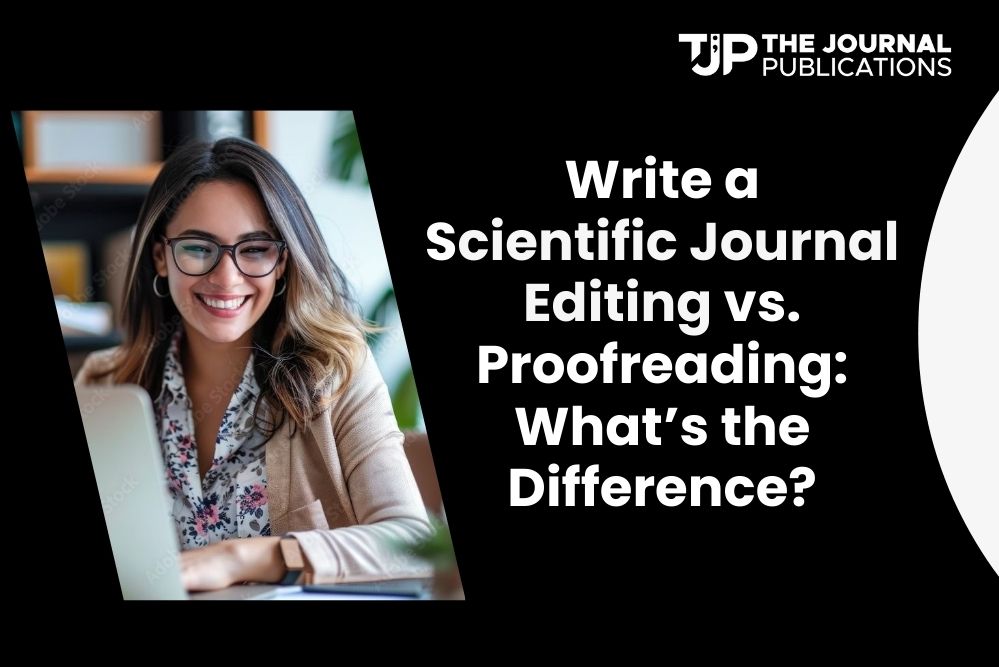Table of Contents
- Intro
- What Is Scientific Journal Editing?
- What Is Proofreading?
- Key Differences Between Scientific Journal Editing and Proofreading
- When to Choose Scientific Journal Editing
- When to Choose Proofreading
- How Both Services Work Together
- Close
- FAQs
Clarity and precision are the lifeblood of academic publishing. Getting professional help to polish your manuscript will be key to publishing that landmark paper or submitting your first article to a journal. But do you need scientific journal editing or just proofreading? Most often confused with one another, they serve quite different purposes. Knowing the difference is step number one in getting published in a high-impact journal.
Scholarly authors regularly face a huge dilemma: Whether to have some editing or proofreading done to their work before submission. While these terms are often used synonymously, they actually refer to different services offered concerning your manuscript. This blog will demystify the difference between scientific journal editing versus proofreading so that you can make an intelligent choice and increase the chances of being accepted.

What Is Scientific Journal Editing?
Journal editing is a full-service editing that is more than grammar and spelling. It is concerned with enhancing the overall structure, tone, scientific clarity, formatting, and logical flow of your paper. A subject-matter expert professional editor reviews whether your ideas are presented well, your data are presented well, and your arguments are scientifically valid.
Common elements of scientific journal editing include:
- Restructuring sentences for clarity
- Enhancing academic tone and formal style
- Checking for scientific accuracy
- Ensuring journal-specific formatting guidelines are met
- Providing feedback on logical flow and argumentation
What Is Proofreading?
Proof reading is the last quality control before the publication or submission of the manuscript. Proofreading is dealing on the lower-level surface errors such as spelling, punctuation, and grammatical errors. It does not come under rewording the sentences, changing the structure, or altering the meaning of content. Such things fall under the editing process of the scientific journal.
Typical proofreading tasks include:
- Correcting typographical errors
- Fixing punctuation and capitalisation issues
- Checking for grammatical consistency
- Ensuring formatting consistency (e.g., headings, spacing, fonts)
Key Differences Between Scientific Journal Editing Help and Proofreading
| S.No | Aspect | Scientific Journal Editing Service | Proofreading |
| 1 | Depth of Service | In-depth analysis and content refinement | Surface-level corrections |
| 2 | Focus | Clarity, logic, tone, and structure | Grammar, spelling, and punctuation |
| 3 | Editor’s Expertise | Subject-matter experts in scientific writing | General language experts |
| 4 | Timing in Workflow | Early to mid-stage of manuscript preparation | Final step before submission or printing |
| 5 | Formatting & Style | Includes journal-specific formatting | Minor formatting adjustments |
| 6 | Objective | Improve quality and scientific value | Eliminate minor language errors |
When to Choose Scientific Journal Editing
Scientific journal editing is ideal if:
- You’re submitting to a high-impact or peer-reviewed journal.
- English is not your first language.
- You’re unsure whether your manuscript meets journal guidelines.
- You want feedback on clarity, logic, or structure.
- Your manuscript is at the early or middle stage of development.
Several authors find it helpful to get journal editing services early in their writing, particularly when writing the introduction, results, or discussion.

When to Choose Proofreading
Proofreading is most suitable when:
- Your manuscript has already gone through editing for structure and clarity.
- You are at the tail end of submission.
- You need a last-minute language check before publication.
- You want to catch small typographical or formatting errors.
Consider proofreading as final polish—it never alters your message but ensures that it’s communicated perfectly.
How Both Services Work Together
For most authors, the optimal procedure is a two-stage editing service:
- Scientific journal editing to polish the writing and make sure it’s organised, effective, and suitable for the journal.
- Proofreading to make certain that the finished work is error-free and submission or print-ready.
Both services help ensure more favourable peer review and less risk of desk rejection due to sloppy writing or unclear presentation.
Closing Note
Scientific journal editing and proofreading are both key components of the scholarly publishing process but have different functions. If your paper requires assistance with scientific language, structure, and clarity, go for scientific journal editing. If it is already a well-written document and merely needs a last run-through for typos, proofreading will suffice.
Understanding when and how to use these services can improve the quality of your research and improve your chances of being accepted in high-competition journals.
FAQs
Can I skip scientific journal editing if I’m a native English speaker?
Not necessarily. Native speakers also benefit from scientific journal editing, particularly when publishing in high-level journals that require clarity, organisation, and compliance with certain formatting rules.
Do journals provide scientific journal editing services?
Most journals do not provide editing services. They want submissions to be well-written and refined. Some will reject a paper in its entirety if it is not clear or has language problems.
How can I find a reliable scientific journal editing service?
Seek out services with subject-matter specialists, authenticated testimonials, clear pricing, and experience with your target journal. Many reputable companies specialise in editing for specific scientific fields.





